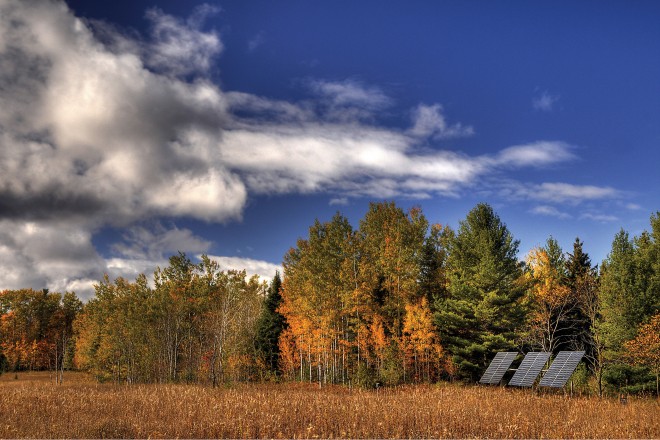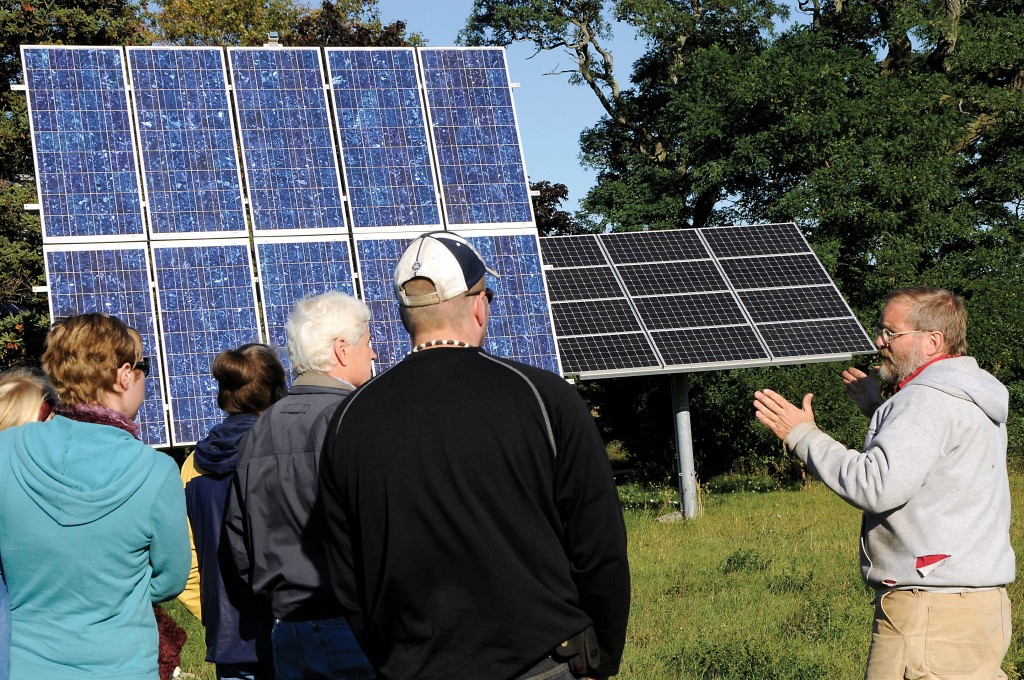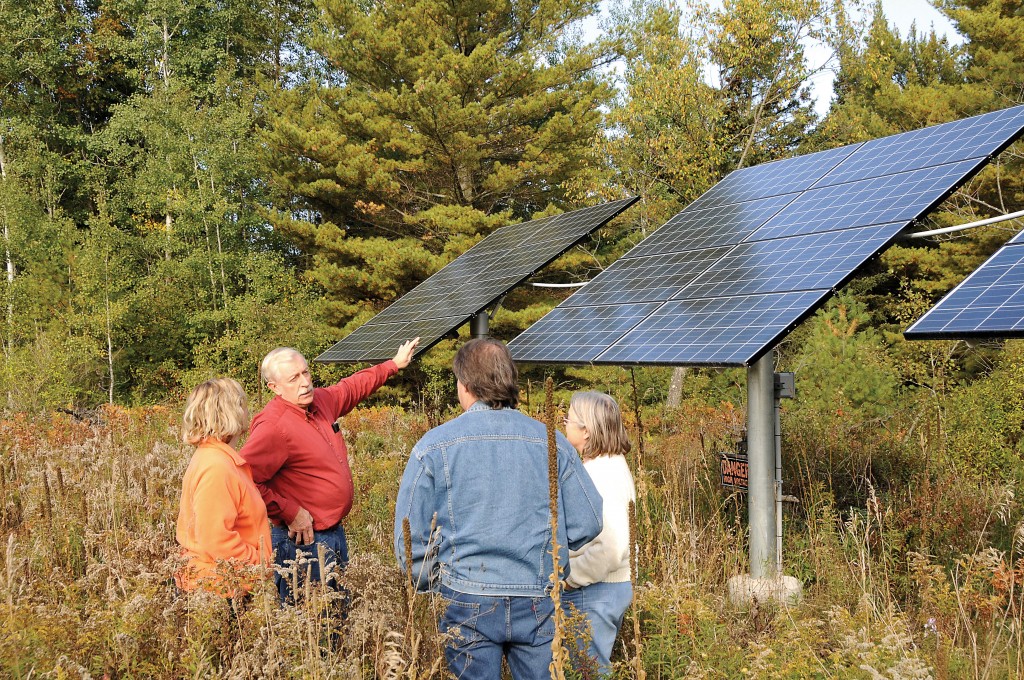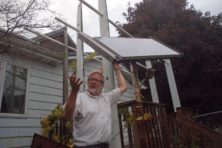Keeping it Simple: Door County’s Solar Home Tour
- Share
- Tweet
- Pin
- Share

Every October, in conjunction with National Energy Awareness Month, thousands of people venture out into their communities to see how their neighbors are utilizing solar energy to reduce energy costs and do their part to conserve resources and harness Earth’s renewable energy. The event is called the National Solar Tour, organized and put on by the American Solar Energy Society. Here in Door County, avid conservationists have done their part to contribute and participate in this national event that was attended by some 140,000 people across the nation last year.
Thanks to a group of dedicated members of the Door County Environmental Council, the Renewable Energy Task Force, or RETF, was born in 2003. Along with other missions and goals that revolve around the education and promotion of green energy practices, the organizers of the RETF endeavored to include Door County in the National Solar Tour through the Midwest Renewable Energy Association.
One of the organizers, Don Pardonner, saw it as an opportunity for homeowners and visitors in Door County to see how their neighbors were utilizing not only solar energy, but also all types of renewable energy such as wind power, geothermal heating, and green building practices.

“You may see 10 different homes and 10 different people on the tour all saying, ‘This is the way [to use alternative energy].’ It just matters that people are using it and sharing it,” Pardonner says.
In many ways Door County has been leading many efforts in renewable energy use and green construction. According to the RETF’s Door County Renewable Energy Resource Guide, currently there are over two dozen homes and small businesses throughout the county that use renewable sources for some or most of their energy needs. This makes Door County an ideal place to participate in the National Solar Homes Tour.
The tour is always on the first Saturday in October, and in some places across the country will take up two or even three days of events. This year in Door County, the event will take place over Friday and Saturday, October 2nd and 3rd. The first day will be a showcase for commercial builders and consultants of alternative energy, like Lake Michigan Wind and Sun. The second day will be an exhibition of private homes around Door County. The event runs from 10:00 am to 4:00 pm and is free of charge to the public.
Last year, in 2008, the event as always was co-sponsored by the American Solar Energy Society (ASES), the Midwest Renewable Energy Association (MREA), and Wisconsin Focus on Energy. There were seven homes that participated in the Door County Solar Homes Tour, among them homes that utilize all types of solar energy. One such home was that of Errol Keir and Donna Brown in Baileys Harbor.
“Truly, there is nothing solar power can’t do or can’t power. It’s just a matter of how many modules or panels you have, and a question of infrastructure,” Keir explains.
There are a few different ways to utilize solar power in one’s home. Any way that a homeowner decides to use it involves a process that begins with collecting sunlight and turning that into electricity or concentrating the heat of the sun into a different form like liquid. The process of turning sunlight directly into electricity to be used around the house is called photovoltaic, or PV. A small scale example of PV is a solar calculator. In a home, obviously the process is more intricate, but still manages to be simple.
“PV only produces electricity, nothing else. Currently our panels account for about 50 percent of all our electricity usage on the property,” Keir states.
Utilizing solar hot water is another way to harness the sun’s energy in the home. In the Pardonner and Judy Reninger home in Baileys Harbor, water is run from the rooftop where they have 10 4-by-8-foot solar panels which heat up the liquid and send it back into the house for domestic hot water and space heating.
“The first time we turned the system on, the water went up to the panels at 60 degrees and three minutes later came back down at 130. The installers were stunned and came back days in a row to see if it was still consistent. They’d never seen anything like that before,” Pardonner remembers with a smile.
While utilizing alternative energy is not a new concept, for many (but not all) builders and contractors in Door County it is a relatively recent venture, just like it is for the homeowners. Businesses and contractors that offer alternative energy systems have increased steadily in the last five years.

One of the biggest attractions for users of solar, whether PV or solar hot water, is the buy-back initiative in Wisconsin. Whatever energy is created above and beyond that which is used in the home can be sold back to the energy company for the same price that a kilowatt-hour is purchased by homeowners. This is a wonderful incentive that many solar users are taking advantage of.
Another way that homeowners utilize solar hot water is for actually heating their home instead of having a boiler or furnace. “We have a heat sink beneath the house,” Reninger explains, “which is also heated by the collectors making it unnecessary to have a central air system.”
This process, sometimes called solar space heating, is one of the key features of their home that is so attractive for Pardonner and Reninger. “The system is practical, comfortable, cost effective, and energy efficient, and because we don’t have duct work, it is so clean,” says Reninger.
The way solar space heating works is that inside the foundation of their home lies 3,872 cubic feet of compacted sand that provides heat storage. In that 203 tons of sand there is tubing filled with solar heated hot water that runs throughout the foundation beneath their concrete slab floor which not only heats the floor to a warm temperature, but also heats the air in the house. In the summer, when they don’t need the air and floor to be heated, they simply turn off the system and the solar hot water’s heat is stored.
The use of such solar applications, whether it be PV or solar hot water, has benefits that far outweigh any negatives. While the upfront cost of investing in solar collectors and systems can be considerable, many of the solar hot water systems pay for themselves within the first five to 10 years of ownership, due to drastic decreases in electricity and energy costs. PV systems take longer, however.
“You cannot look at it in terms of when [the PV system] will pay for itself. You have to want it. You have to not want your power by burning finite resources. It’s like buying into the future,” Keir asserts.
Additionally, now is an ideal time to invest because of the government’s 30 percent tax credit and the myriad opportunities that are available from organizations looking to invest or aid in green building practices. The Pardonner/Reninger home, for example, was funded heavily by a grant from Wisconsin Focus on Energy.
Some skeptics may claim that Door County is not the ideal place for solar panels and collectors due to our somewhat cloudy climate and cold temperatures. The truth is, though, solar collector systems are able to store energy for those intermittent cloudy days when collection isn’t at peak, and regardless of how cold the air temperature is, the temperature of sunlight remains relatively consistent inside the collectors.
However, not every home site is ideal for solar collectors. “You must watch your property first,” Reninger explains. This is important especially before installing solar collectors and, more importantly, before construction of a home if possible. “See where the sun shines throughout the day the most, and then you can choose an appropriate site where hopefully you won’t have to cut down trees.”
Keir, who has approximately seven years experience installing PV panels, explains that designing your own home for alternative energy before building is easier than retrofitting an older house, but it can be done.
“If you can build your house, you can set it up for efficiency to use the sun in a less costly way; to retrofit a house is more costly. Starting from siting, a person can integrate passive solar, radiant floor heating…anything. Adding alternative energy to a pre-existing home can be tricky, but it can be done,” Keir states.

Whichever route a homeowner goes should be simple and practical. “We ascribe to the KISS theory of home design,” Pardonner continues. “Keep It Simple, Stupid.”
In other words, there is no need to overcomplicate something as simple as harnessing the Earth’s renewable energy into an attractive, practical home. Find out what possibilities work for your home, research it, talk to those who’ve gone before you, and go for it.
If a property site is not ideal for solar, there are a variety of other alternative energies that may be more appropriate, and many of these are available to view and investigate during the solar homes tour.
Keir sums up the purpose of the Door County National Solar Homes Tour well. “[The tour] will bring people into further awareness of the whole realm of alternative energy usage. A lot of people think they’re interested, they’ve heard it’s all a good idea and they’re interested a long time before they jump and go for it. They just need to be brought along the knowledge curve and the enthusiasm curve.

